THINK ABOUTIT CRASH REPORT
Date: March 25, 1948
Sighting Time:
Day/Night:
Location: Aztec, New Mexico
Urban or Rural: Rural
Hynek Classification: CE-II (Close Encounter II) Observation of an object in close proximity to the witness, where physical traces (impression, burn, medical effect, etc.) are left or (electrical effect, heat) are felt
Duration:
No. of Object(s): 1
Size of Object(s): 100 feet in diameter and 30 feet high
Distance to Object(s):
Shape of Object(s): saucer-shaped craft
Color of Object(s): light metal resembling aluminum
Number of Witnesses:
Source:
Summary/Description: On March 25, 1948, a UFO was detected and picked up on their scopes by three separate and strategically located radar units in the southwestern part of the United States. It is theorized that [the beam from one of the radars] had some kind of effect on the central control system of the flying object, for immediately it seemed to go out of control. The following is an in-depth overview of the crash and subsequent recovery of a UFO and sixteen humanoid occupants near Aztec, New Mexico.
Full Report
THE AZTEC UFO RECOVERY 1948
It was the columnist Frank Scully who first alerted the world to sensational stories of recovered flying saucers and little men in his best-selling book Behind the Flying Saucers published in 1950. Scully claimed that up to that time there had been four such recoveries, one of which was alleged to have taken place around Aztec, New Mexico, when sixteen humanoid bodies were recovered together with their undamaged craft. According to Scully’s informants, the disk that landed near Aztec was 99.99 feet in diameter, its exterior made of a light metal resembling aluminum but so durable that no amount of heat (up to 10,000 degrees was applied) or diamond-tipped drill had the slightest effect. The disk apparently incorporated large rings of metal which revolved around a central, stabilized cabin, using an unfamiliar gear ratio. There were no rivets, bolts, screws or signs of welding. Investigators were eventually able to gain entry. Scully was told, because of a fracture in one of the portholes, which they enlarged, revealing a knob inside the cabin which when pushed (with a pole) caused a hidden door to open. Sixteen small humanoids, ranging in height from 36 to 42 inches, were supposedly found dead inside the cabin, their bodies charred to a dark brown color. Scully was told that the craft landed undamaged, having landed under its own guidance. The craft was eventually dismantled, the investigators having discovered that it was manufactured in segments which fitted in grooves and were pinned together around the base. The complete cabin section, measuring 18 feet in diameter was lifted out of the base of the saucer, around which was a gear that fitted a gear on the cabin. These segments, together with the bodies, were then transported to Wright Field (Wright Patterson AFB). Some of the bodies were later dissected and examined by the Air Force, and were found to be similar in all respects to human beings, with the exception of their teeth, which were perfect.
New Supportive Evidence?
According to important information published by William Steinman in 1987 there is a large grain of truth in the Aztec story, and he has managed to acquire some astonishing supportive evidence. Like Scully, he is unwilling to divulge his sources, which inevitably lays him open to charges of fabrication. Steinman discovered that the Aztec disk came to earth on 25 March 1948, having been detected by three separate radar units in the southwest, one of which was said to have disrupted the craft’s control mechanism. The area of impact was calculated by triangulation and this information was immediately relayed to Air Defense Command and Gen. George C. Marshall, then Secretary of State, who allegedly contacted the MJ-12 group as well as the Interplanetary Phenomenon Unit (IPU) of the Army Counterintelligence Directorate. The IPU operated out of Camp Hale, Colorado, at this time, Steinman claims, and its main function was to collect and deliver disabled or crashed disks to certain specified secret locations. The craft was recovered within hours by the IPU scout team about 12 miles northeast of Aztec. General Marshall ordered Air Defense Command to go off alert status, and the radar units were advised that there had been a false alarm. Marshall then gave orders to the commander of the IPU to organize a recovery team and contacted Dr. Vannevar Bush – the. head of MJ-12 to gather together a team of scientists to accompany the IPU to the crash site. Steinman has named these scientists as follows:
Dr., Lloyd Berkner, Dr. Detlev Bronk, Dr. Carl A. Heiland, Dr. Jerome Hunsaker, Dr. John von Neumann, Dr. Robert J. Oppenheimer, Dr. Merle A. Tuve, Dr. Horace B. van Vandenberg.
Four of these scientists, it will be noted, were members of the original MJ-12 panel set up in September 1947. Dr. Carl A. Heiland was a geophysicist and magnetic sciences expert who was the head of the Colorado School of Mines, and according to Steinman leaked details of the recovery to one of Scully’s sources, Leo GeBauer. Dr. Horace B. van Vandenberg was an inorganic chemist associated with the University of Colorado. Dr. Merle A. Tuve worked for the Office of Scientific Research and Development during World War II, and is chiefly remembered as a geophysicist for his techniques of radio wave propagation of the upper atmosphere. Dr. Robert J. Oppenheimer distinguished himself primarily as leader of the Los Alamos atomic bomb project , commanding the allegiance of the world’s top physicists. He was the Director of the Institute of Advanced Studies at Princeton from 1947 and became Chairman of the General Advisory Committee of the Atomic Energy Commission. Dr. John von Neumann, the famous Hungarian born mathematician, became a consultant on the atomic bomb (Manhattan Project) in 1943. His main area of expertise lay in the design and development of computers. The scientists, according to Steinman, were told by Dr. Bush to assemble at Durango Airfield, Colorado, 35 miles to the north of Aztec, with the minimum delay. All those involved in the recovery were sworn to an above top secret oath.
The IPU convoy used a route to the site that avoided main roads, and on arrival road blocks were set up at strategic points within two miles of the recovery area. The owner of a ranch and his family were allegedly held incommunicado and told never to discuss the matter (cf. the Roswell incident). Equipment hauling trucks were camouflaged to look like oil drilling rigs during the operation.
Inside the Craft
A team of scientists arrived at the site a little later than the IPU team and began dissecting the disk. According to Steinman, they entered the craft one by one, entry having been gained via a fractured porthole as described in Scully’s account. The portholes themselves looked metallic and only appeared translucent on close inspection. Inside the craft they found two humanoids, about two feet in height, slumped over an instrument panel charred deep brown. Another 12 bodies lay sprawled on the floor in chamber within the cabin, making a total of 14 bodies (not 16 as Scully had been told).
An instrument panel supposedly had several pushbuttons and levers with hieroglyphic-type symbols, as well as symbols illuminated on small display screens. Bush and von Neumann discovered that the control panel had drawers which rolled out, but no wiring could be detected. A book composed of parchment-like leaves with the texture of plastic also contained the strange hieroglyphs – similar to Sanskrit, Oppenheimer thought. This was given to General Marshall, who then passed it on to two leading cryptological experts for analysis, William F. Friedman and Lambros C. Callihamos (who both later led distinguished careers in the National Security Agency).
Dr. Bronk, a physiologist and biophysicist, examined the bodies and asked Bush to get hold of cryogenic equipment with which to preserve them. Cryogenics specialist Dr. Paul A. Scherer, a colleague of Bush’s, was contacted and advised Bush to obtain some dry ice. Meanwhile, another small group of scientists and military personnel examined the craft and were eventually able to dismantle it when several interlocking key devices were found which opened up seams at specific points.
Three days later the segments were loaded onto three trucks, together with the bodies, and transported with a tarpaulin marked “Explosives”. The convoy headed at night by the least conspicuous and often most laborious route to the restricted Naval Auxiliary Airfield Complex at Los Alamos, arriving one week later. Here they remained for over a year, Steinman claims, before being transported to another base.
The Bodies
Dr. Paul A. Scherer eventually obtained special preservation containers for the least damaged bodies, Steinman relates. One of the companies which supplied equipment was the Air Research Corporation, of which Scherer was Director of Research and Development; it supplied the liquid nitrogen pump, circulation system and refrigeration units. Other specimens were given a complete autopsy, by a team headed by Dr. Bronk, of biophysicists, histochemists and pathologists. The results were put in a report, part of which, Steinman claims, appeared in the “Air Force Project Sign (Grudge) Report No. 13” which has never been released.
According to the report, the bodies were described as averaging 42 inches in length. The facial features strongly resembled “mongoloid Orientals” in appearance, with disproportionately large heads, large “slant” eyes, small noses and mouths. The average weight was about 40 pounds. The torsos were very small and thin, with very thin necks. The arms were long and slender, reaching the knees, with hands containing long and slender fingers with webbing between them. There was no digestive or gastrointestinal tract, no alimentary or intestinal canal, and no rectal point. No reproductive organs were apparent. Instead of blood there was a colorless liquid with no red cells which smelled similar to ozone.
——————————————————————————–
Further Evidence
Veteran researcher Leonard Stringfield, a former Air Force intelligence officer who is the world’s leading specialist on what he calls “Retrievals of the Third Kind,” shares my misgivings about some of the material in Steinman’s book, but we are both impressed with his extensive research into the Aztec case. Stringfield has uncovered further evidence himself. Captain V. A. Postlethwait, who was on detached service with Army G-2 (Intelligence) in 1948, told Stringfield that he was cleared to see a top secret cable describing the crash of a saucer-shaped craft 100 feet in diameter and 30 feet high, with one porthole broken, causing suffocation to the five occupants – who had turned blue as a result. The bodies were about four feet tall with relatively large heads, Postlethwait recollects. The metallic skin of the saucer was too tough to penetrate, although as thin as newspaper. The incident was said to have occurred near White Sands, New Mexico. Aside from a few discrepancies there are some significant parallels with the Aztec case. Postlethwait revealed to Stringfield, for example, that private property was purchased to facilitate transporting the craft.
Leonard Stringfield has also spoken with Dr. Robert Spencer Carr, a retired University of South Florida professor who claims to have testimonial evidence from five sources, including a nurse and a high-ranking Air Force officer who participated in the recovery of a crashed UFO and occupants in 1948 – presumed to be the one at Aztec (although there was another alleged recovery that year, just across the Mexican border near Laredo, Texas). In 1982 Stringfield asked Carr to disclose the name of his principal source, “on the premise that our ages give us little time tolerance in our search for truth.”
“When Professor Carr named his source,” says Stringfield, “I sat back dumbfounded. I knew his name well in research, and recalled some of his comments on UFOs while he served as an Air Force officer. . . . “Please, Len,” pleaded Carr, “keep the name to yourself; please spare me any trouble as long as I live . . . My key witness participated in the 1948 retrieval and saw alien bodies on location.”
According to Bill Steinman, two of Carr’s sources were aeronautical engineers who provided important information regarding the saucer’s construction and propulsion. A source now named is Arthur Bray (not to be confused with the Canadian researcher), a security guard involved with the recovery project. Carr also interviewed a woman whose father was present during the recovery. Information pertaining to the flying saucers must be suppressed, he told his daughter. “If news of this vehicle’s water-driven engine got out to the whole scientific community, that would be the end of the oil industry.” The comment is of course pure hearsay, but if there is any truth in it a further possible reason for the cover-up is brought to light.
At the still fenced-off crash site on a plateau twelve miles northeast of Aztec, Bill Steinman has uncovered charred and scraped-off rocks of various sizes as well as some metal bracing struts that might possibly have been used for supporting the craft. On one of his visits to the area he was shadowed by two unmarked helicopters.
As for George Bowra’s claim that no one in Aztec, could recall the incident, Steinman has traced at least four people who knew where the crash site was located, one of whom, “V.A.,” recalls that sometime between 1948 and 1950 a huge disk-shaped flying object with a dome on top skimmed about 100 feet above the ground not far from him. The witness pointed out to Steinman a cliff jutting above the Animas River.
“That thing, or flying saucer, tried hard to clear that cliff, but it hit the very corner up there, shooting sparks and rocks in every direction,” he claims. “Finally, it made a right-angle turn in midair and headed straight north in the direction of the alleged crash site at Hart Canyon. That’s the last I saw of it. I ran into the house and called the military in Albuquerque. I never heard from them about it.”
Steinman first became interested in UFOs in 1981 when he read Frank Scully’s book, and has since devoted much of his time and resources on the Aztec case and the other recoveries associated with Scully’s claims, often in the face of discouraging odds. Steinman’s job in quality assurance and analysis in the aerospace industry has aided him in probing the complex and intricate leads that he has pursued.
Writing in the foreword to Steinman’s book, UFO Crash at Aztec, Leonard Stringfield explains how, like many others, he was led to believe the Scully story was a hoax, his disbelief long being conditioned by a succession of ufologists who for years claimed that Scully “was duped by a scheming Silas Newton and his cohort, Leo Gebauer.” But now, thanks to Bill Steinman’s painstaking research (as well as some of his own leads), he has been obliged to reevaluate the evidence. – aztecufo.com
Clcik for video – Aztec 1948 UFO Crash – The Government Cover-Up
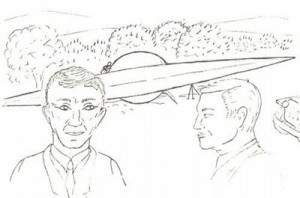 |
| Artist’s impression of the craft on the ground. Dr. Vannevar Bush, team leader, and Dr. Jerome Hunsaker, Aeronautical Engineer at MIT. (artist: Chan Johnson; source: Steinman/Stevens) |
Incident at Aztec
Next to the so-called ‘Roswell Incident’ of July 1947, the most talked-about, dissected, championed, promoted and discredited ‘UFO crash’ case of all is that which is alleged to have occurred in the vicinity of Aztec, New Mexico, in 1948. According to information related to the author Frank Scully in the late 1940s (and subsequently published in his best-selling 1950 book, Behind the Flying Saucers), a number of incidents in 1947 and 1948 had led to US authorities recovering the wreckage of four alien spacecraft and no fewer than 34 alien bodies, all of which were being studied under cover of the utmost secrecy at various defence establishments in the United States.
As Scully was willing to admit, the bulk of his information had come from two sources: Silas Mason Newton (described in a 1941 FBI report as a “wholly unethical businessman”) and one ‘Dr Gee’, the name given to protect eight scientists, all of whom had supposedly divulged various details of the crashes to Newton and Scully. According to Scully’s sources, one such UFO was found in Hart Canyon, near the town of Aztec, in March 1948.
Located in the spectacular Four Corners Area, where New Mexico, Colorado, Utah, and Arizona meet, Aztec lies 180 miles (290km) northwest of Albuquerque and 300 miles (480km) southwest of Denver. Surrounded on three sides by Indian reservations (Navajo, Ute, and Apache) Aztec sits at the heart of Indian Country. Sandstone mesas overshadow lush river valleys, the snow-covered peaks of the San Juan mountains shimmer in the north, the unique badlands of the Bisti Wilderness lie to the south, and, heading west, you cross the Navajo reservation, passing Shiprock on the way to Monument Valley. The town is also home to the famous Aztec Ruins National Monument, a 12th century, 450-room pueblo ancestral to the modern Pueblo communities of New Mexico. But what of the most controversial aspect of the town’s history?
According to the story, after the Aztec saucer had crashed, it was located, essentially intact, by elements of the US military that gained access to the object via a fractured porthole. Inside were found the bodies of no fewer than 16 small, humanlike creatures, all slightly charred and undoubtedly dead. The UFO was then dismantled and transferred, along with the bodies of the crew, to Wright Field air base, Dayton, Ohio, for study.
At the time of its release, Scully’s book caused a major sensation. In 1952 and 1953, however, JP Cahn, a reporter who had previously worked for the San Francisco Chronicle, published two detailed exposés which cast doubt on the claims of Newton and ‘Dr Gee’ (identified by Cahn not as ‘eight scientists’ but as one Leo Gebauer, whose background was as dubious as Newton’s).
Yet, as the passing years have only gone to show, the Aztec UFO crash refuses to roll over and die – indeed it has gone on to spawn a whole industry. In 1974, for example, Professor John Spencer Carr revealed that he had in his possession what was deemed to be credible information relating to the case, including testimony from a senior US Air Force officer who was allegedly involved in the UFO retrieval. A year later, however, the event was once again demolished, this time by one Mike McClellan, in a persuasive paper titled The UFO Crash of 1948 is a Hoax.
In view of this, it came as something of a surprise when, in 1987, the researcher William Steinman published the book UFO Crash at Aztec, in which he asserted that the incident did occur and that Frank Scully’s book was in essence factually correct. And just to compound things further, following the release of the Steinman book, Fate magazine reported that: “[the book] draws on speculation, rumor, unnamed informants and unbridled paranoia to defend and elaborate on the original story.”
Here we see the major problems with the Aztec story: both Newton and Gebauer were, at best, dubious conmen. Scully published their testimony without question and Steinman looked at the affair from the perspective of a believer. As a result, the story remains unresolved – even after more than half a century has passed. Did a UFO crash to Earth in the harsh deserts of New Mexico? Were diminutive alien bodies recovered at the crash site? Was the incident successfully concealed by a concerned US military? Were the key players in the story all that they appeared to be? And if not, then exactly what did occur at Aztec, New Mexico, on that fateful day in 1948?
To answer those questions, we have to turn – perhaps surprisingly – to the US Government. While documentation pertaining to the allegedly similar events at Roswell nearly 12 months before is practically nonexistent, precisely the
Born on 25 February 1903, Leo Arnold Julius Gebauer – Frank Scully’s mysterious ‘Dr Gee’ – is the subject of an FBI file no less than 398 pages long (to put that in perspective, Eleanor Roosevelt’s FBI file ran to 3,271 pages). Interestingly, fewer than 200 pages of the file have been declassified under the provisions of the US Freedom of Information Act. Nevertheless, as the available papers demonstrate, Gebauer was, to put it mildly, a colourful character.
To begin with, he went under numerous aliases, including Harry A Grebauer, Harry A Gebauer, Harry A Greybauer, Harry A Barbar, Leo AJ Gebauer, Leo Arnold Julius Gebauer and Arnold Julius Leopold Gebauer. And as a Confidential FBI report of 19 December 1941 states, Gebauer had made some disturbing statements some seven months previously: “What this country needs is a man like Hitler; then everybody would have a good job… It would be God’s blessing if we had two men in the United States to run this country like Hitler. The English people are nothing but a dirty bunch of rats. We should stay home and tend to our own damn business and let Germany give England what they had coming.”
Even more controversially, Gebauer went on to describe Hitler as a “swell fellow”, adding that: “the guy who shoots President Roosevelt should be given a gold medal”. As FBI Special Agent JJ McGuire noted: “Gebauer is always pointing out the good points of the German Government over the English and our democratic form of Government.”
Controversy continued to surround Gebauer, as a memo from the Denver office of the FBI, dated 14 February 1969, shows. It refers to an unnamed source who “threatened to do bodily harm to Gebauer and demanded $50,000 as part of commissions due him”.
Silas Mason Newton, Frank Scully’s main source for the Aztec ‘crashed UFO’ story, attracted his own fair share of controversy. An FBI document dated 30 September 1970 states:
Newton was born on July 19, 1887, at Shelby County, Kentucky. He is divorced and is a college graduate. He has claimed his occupation was that of a geologist, who has an income of $500 a month. He claims to have a Bachelor of Science in geology from Baylor University and to have studied for six months at Oxford University.
Newton’s geological credentials sound very respectable, but a further FBI report of 1970 reveals: Silas Newton, presently under indictment in Los Angeles, California, for fraud, returned to Silver City, New Mexico, area January 1970, and began to organize what appears as a mining swindle.
Newton and Gebauer were clearly somewhat shady characters, but what brought them and the whole crashed UFO story into the world of Frank Scully? The FBI took a keen interest in the intricacies of the Aztec affair and its files of 1952 tell a notable story:
Regarding the saucer story in July 1949 Gebauer, as a specialist in geomagnetics, became consultant to Newton, an alleged geophysicist, using instruments of his own design to make microwave surveys of oil pools. Newton had been a friend of Scully, who writes a weekly column for Variety; and in the fall of 1949, Gebauer discussed saucers with Newton and Scully at which time he claimed to have conducted secret inquiries with the government and other scientists on several saucers which had landed in New Mexico and Arizona.
Gebauer claimed to have recovered from these saucers the tubeless radio, some small gears and small disks, all of which material had been secreted by Gebauer from the other scientists and government investigators. The three men agreed to publish a story of Gebauer’s discoveries, but because of Gebauer’s connections with the matter, he was to be identified only as Dr Gee. To determine the reaction of the public to an unauthenticated story of the actual existence of flying saucers, on March 8, 1950, Newton, as Scientist X, appeared as a guest lecturer before a science class at Denver University.
Newton told of Dr Gee’s findings, and the substance of the lecture leaked out to the newspapers. As a result, Scully wrote his book setting forth Dr Gee’s discoveries and revelations.
After reading the saucer story, JP Cahn noted several inconsistencies, and he determined to make an investigation to determine whether the story was based on facts or a hoax. In the beginning he went to Scully, but was unable to obtain the identity of Dr Gee, and Scully was reluctant to produce Newton. Cahn met Newton in Scully’s home at which time Newton claimed to be a graduate of Baylor University and Yale University, and a post-graduate of the University of Berlin. Newton promised to discuss with Dr Gee the proposition to disclose fully an authenticated announcement that space ships were landing on Earth, together with photographs, metals, and other evidence.
Newton exhibited a couple of gears, fine-toothed and about the size of pocket watches, and two disks of unknown metals, all being tied up in Newton’s handkerchief. He alleged these items were obtained from one of the saucers. Newton also told Cahn of seeing secret detailed plans on the Airflow system of B-26s in Dr Gee’s laboratories in Phoenix on which the mysterious Dr Gee was doing research for the government. Dr Gee had developed a magnetic fog, rain and darkness dispelling screen to be fitted on the windshields of airplanes to enable the pilot to see through any weather.
While, in Scully’s book, Dr Gee was said to have degrees from the University of Berlin, Gebauer only claimed electrical engineering degrees from Louis Institute of Technology in Chicago in 1931 or 1932; that while the book claimed from 1943 to 1945 Dr Gee had headed 1,700 scientists doing experimental work in the secret magnetic research, Gebauer was merely chief of laboratories of Air Research Company in Phoenix and Los Angeles, mainly in charge of maintenance equipment.
Cahn talked with Gebauer and obtained a signed statement from him denying that he was Dr Gee mentioned in Scully’s book, and stating that he had no connection with Scully, his book, or statements, and had given Scully no authority to infer that he was Dr Gee. Gebauer did state that he was acquainted with Newton.
On 8 March 1950, Newton delivered a lecture at Denver University, where he was billed as Scientist X. If the lecture was not attended by agents of the FBI, it was certainly monitored by them. An ‘Urgent’ teletype of 9 March from the FBI office at Denver confirms their awareness of Newton’s talk:
Two sources advised today that Silas Newton has given at least one and possibly more lectures before classes at Denver University yesterday or today in which he discussed flying saucers which he allegedly personally observed. This person claims to have seen several such objects, one of which allegedly landed in New Mexico. He also claims to have observed occupants of saucers described by him as of human form, but about three feet [90cm] tall.
Newton had been escorted to the lecture by George T Koehler, a staff-member of the Rocky Mountain Radio Station. Curiously, in Behind the Flying Saucers, Frank Scully reported that within two hours of Newton’s lecture, US intelligence agents were asking questions about Newton and the nature of his talk, and what the general consensus of opinion was with respect to Newton’s revelations. In addition, there is evidence to show that George T Koehler was ‘relieved’ of certain audiotapes after he had the foresight to surreptitiously record an interview between himself and a representative of the US Army. “We know you have been recording these interviews,” Koehler was told. “Now hand them over.”
Matters took an even more bizarre turn when a Kansas City car dealer, named Rudy Fick, began telling stories to the effect that Koehler had informed him that he, Koehler, had “crashed the gate” at a radar station near the New Mexico-Arizona border and had seen two flying saucers the military had in its possession. One of the craft was supposedly badly damaged, while the other was relatively intact. Once again, officialdom took note, as the following extract from FBI records makes clear:
According to the information given Koehler around 50 of these flying saucers have been found in the United States in a period of 2 years. Of these, 40 are in the US Research Bureau in Los Angeles. Each of the craft had a crew of 3. The bodies in the damaged ship were charred, but the other ship’s occupants were in a perfect state of preservation, although dead.
All were uniform height of 3 feet, beardless and their teeth were completely free of fillings or cavities. They wore no under-garments but had their bodies taped and were dressed in a sort of wire. Mr Fick feels that the security department of the military fear that the sudden shock of a surprise announcement that interplanetary travel is possible might cause mass hysteria. OSI District 13 will interview Fick. The editor of the Kansas City Star stated that while they were aware of this story they did not dare publish it in the paper because it is too fantastic.
A partly censored FBI document of 22 March 1950 shows that a story very similar to the one told by Fick was also in circulation in Washington, DC. A one-page report from the FBI Special Agent-in-Charge at Washington, Guy Hottel, to J Edgar Hoover, reveals that:
An investigator for the Air Forces stated that three so-called flying saucers had been recovered in New Mexico. They were described as being circular in shape with raised centers, approximately 50 ft [15m] in diameter. Each one was occupied by three bodies of human shape but only 3 feet tall, dressed in metallic cloth of a very fine texture. Each body was bandaged in a manner similar to the blackout suits used by speed flyers and test pilots. According to Mr [Deleted] informant, the saucers were found in New Mexico due to the fact that the Government has a very high-powered radar set-up in that area and it is believed the radar interferes with the controlling mechanism of the saucers.
Although its contents appear, at first glance, eye-opening, investigator William Moore (co-author, with Charles Berlitz (see obituary, p24), of The Roswell Incident) asserts that the document is largely worthless, since its origins can be traced from Fick, to Koehler, and ultimately to Newton, whose testimony has to be examined very carefully. Of course, pro-Aztec researchers maintain that if Newton and Gebauer were in possession of information that was even remotely accurate, then the memo of 22 March 1950 should not be ignored outright.
So was the Newton-Gebauer-Scully story factually correct? Was Gebauer really the elusive Dr Gee? Or was the entire matter without foundation? Here, things become decidedly murky. In 1953, both Newton and Gebauer received suspended prison sentences for their part in defrauding one Herman Flader, a Colorado businessman who owned the Stay Put Clamp and Coupling Factory on the outskirts of Denver, which doesn’t exactly inspire a great deal of confidence in their word.
And yet, for all Newton and Gebauer’s seeming unreliability, there are a number of intriguing pointers that continue to breathe life into the Aztec affair. As far as Gebauer is concerned, it is a proven fact that in the 1940s he most definitely was employed as chief of laboratories at the Air Research Manufacturing Company, Phoenix.
It so happens that of the four alleged UFO crashes discussed in Frank Scully’s book, one allegedly occurred north of Phoenix, at Paradise Valley, in 1947. The researcher Timothy Good has revealed that he has spoken with a private pilot, Selman Graves, who described witnessing aspects of an operation to retrieve a “large aluminium dome-shaped thing” in the Paradise Valley area, around which were “pitched buildings – tents – and men moving about.” Given that, in the early 1940s, Leo Gebauer had been employed in the aerospace industry relatively close to where this event supposedly occurred, the possibility that he may have gleaned details of the alleged event from former colleagues at Air Research cannot be dismissed.
And, with respect to Gebauer, there is one final point that should not pass without comment. Of the portions of his FBI file that remain classified, a number of pages are exempt from release “in the interest of national defense,” according to the FBI.
Concerning Silas Newton, a number of issues should be noted. First, although a 1970s FBI file on Newton describes him as “an accomplished con man of many years standing, who is knowledgeable in the field of petroleum and mining, and has exploited this knowledge in swindling people,” earlier FBI papers refer to an interesting statement made by Newton in the 21 October 1952 issue of the Denver Post. According to the newspaper: “Newton had advised that he had never seen a flying saucer nor had he ever pretended to have seen one. Newton stated he was merely repeating what he had heard from other sources.”
Considering that Newton was “an accomplished con man,” why, on this occasion, did he seem curiously intent on playing down his role in the Aztec case in general and the UFO controversy as a whole? If Newton suspected that he was possibly in possession of classified information, things become clearer.
Secondly, a further fascinating piece of documentary evidence relative to the Aztec case has surfaced, thanks to the investigative author and (shock-horror!) former CIA man, Karl Pflock: namely, extracts from Newton’s personal diary from the 1970s. In the diary Newton revealed that, in the early 1950s, he was contacted by US military officials who wanted to speak with him about his crashed UFO story. Newton was told that the military knew that his UFO-crash-at-Aztec story was bogus. Incredibly, however, they wanted him to continue spreading the story far and wide, and to whoever would listen. Newton asserted in his diary that while he might not have known too much about crashed UFOs, he had no doubt that his mysterious contacts certainly did know a great deal about the subject. This raises a number of important questions:
Was Newton (as a convicted and known con man) asked to continue telling his largely discredited tale because it acted as a convenient smokescreen behind which the military could hide a real crashed UFO? Or is there another reason why the military would want to spread fake stories about the US Government being in possession of a crashed UFO?
Well, possibly. The US Intelligence community is known to have made use of the UFO controversy as a tool of psychological warfare in the 1950s. Is it conceivable that such stories were deliberately spread – at the height of the Cold War – to try and convince the Soviets that the US had access to a technology the like of which the Soviets could only dream of? Or is this yet another of Silas Newton’s grand games – a game designed to ensure that even from beyond the grave he continues to stir the Aztec cauldron?
The key figures in this puzzling and bizarre story – Silas Newton, Frank Scully and Leo Gebauer – are all long dead, but their legacy ensures that whatever did – or, indeed, did not – occur at Hart Canyon in March 1948, the legend of the little men of Aztec, New Mexico, continues to live on.
Nick Redfern, Fortean Times (UK), March 2004
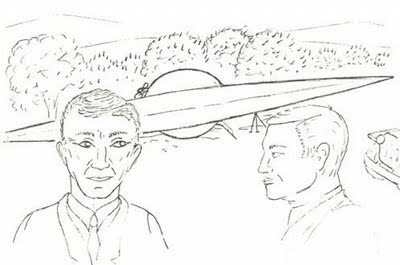
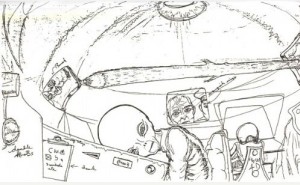
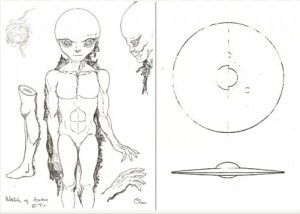
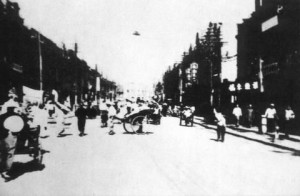
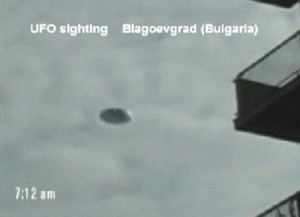
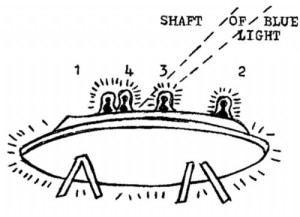
Related Reports
1880: Lamy, New Mexico Encounter
1945: New Mexico UFO Crash Encounter
1947: Socorro, NM UFO Crash – ‘Alien Autopsy’ film